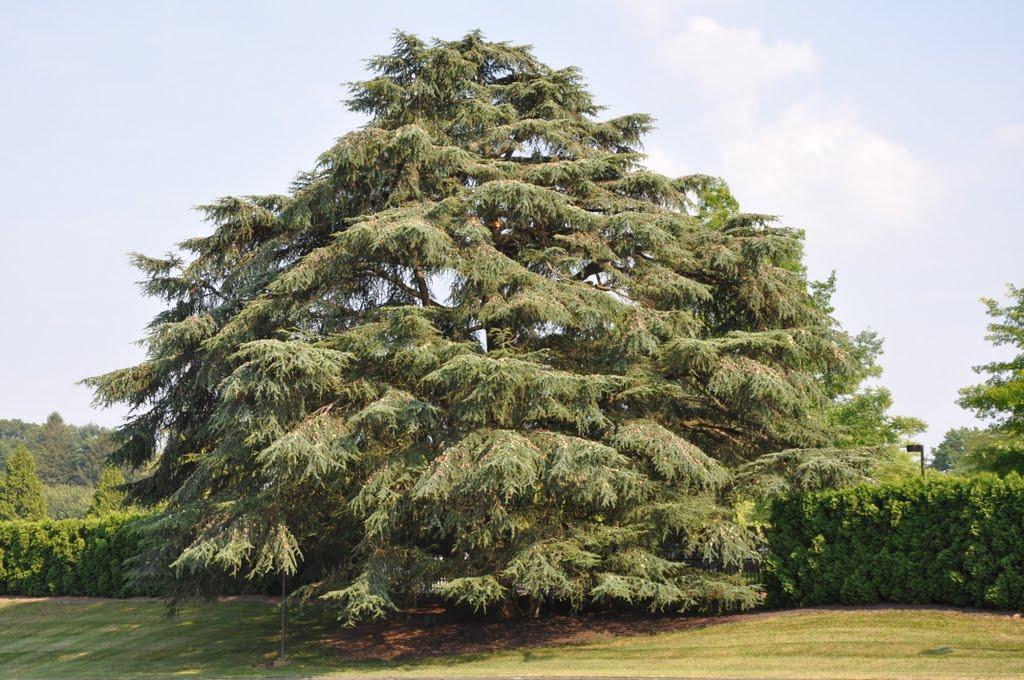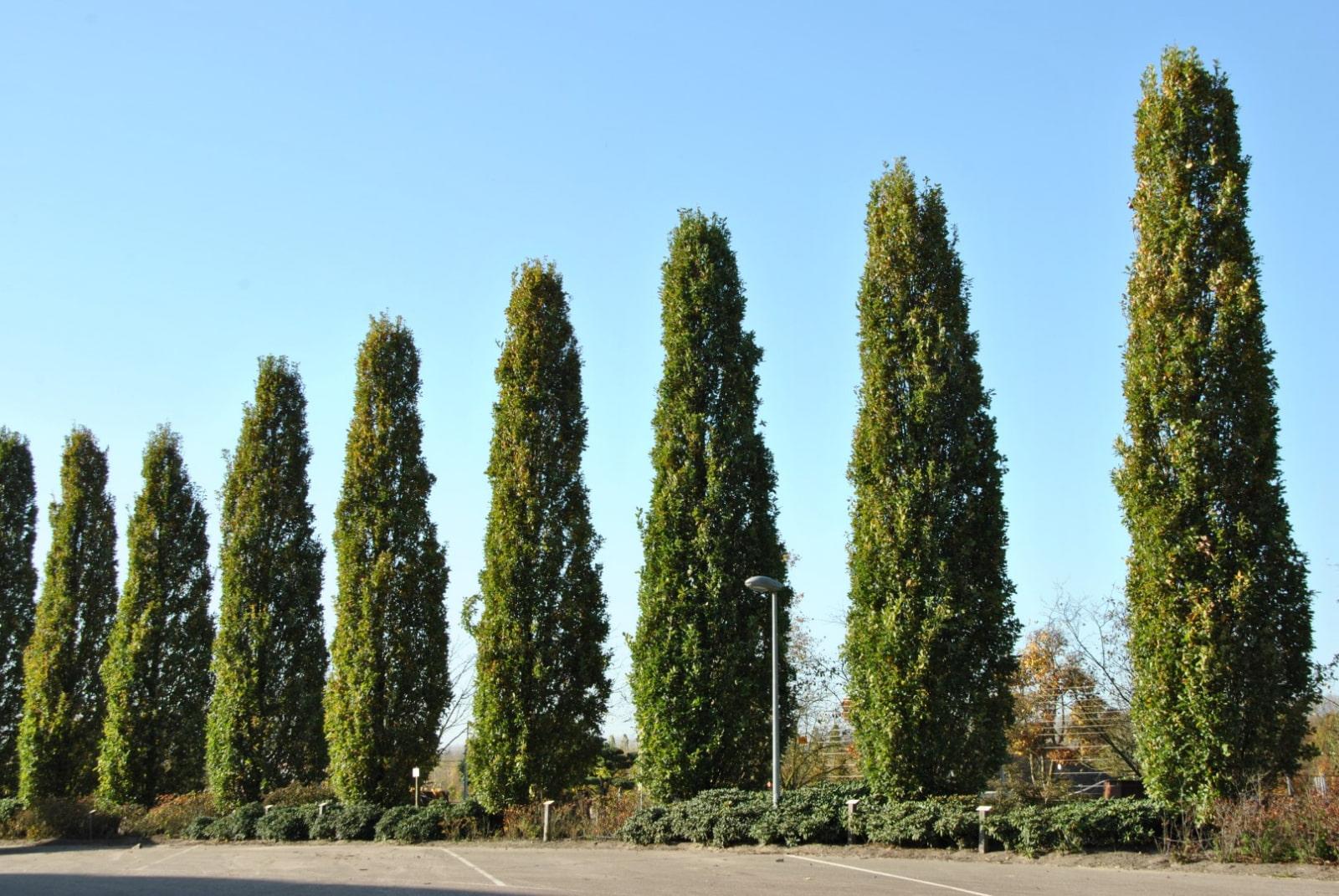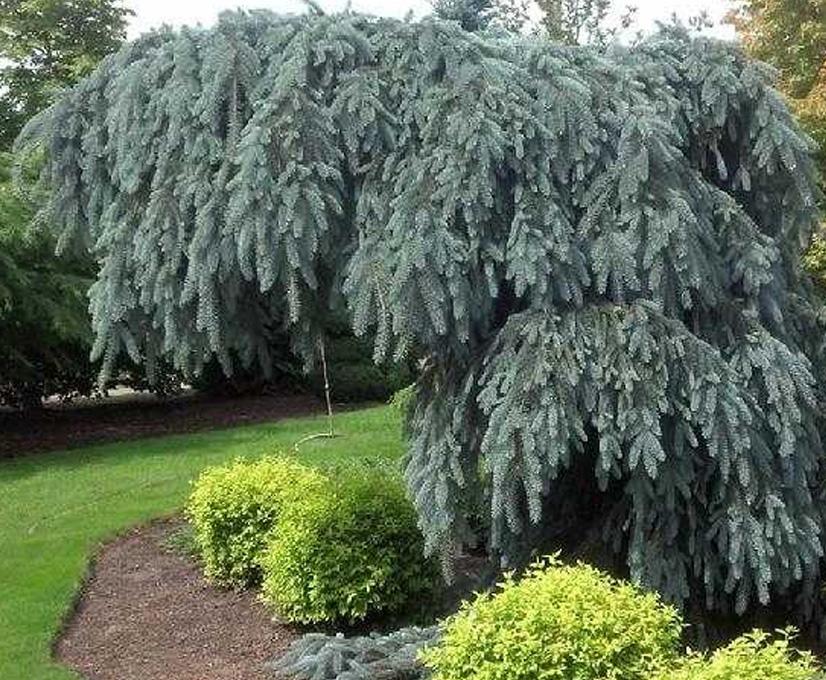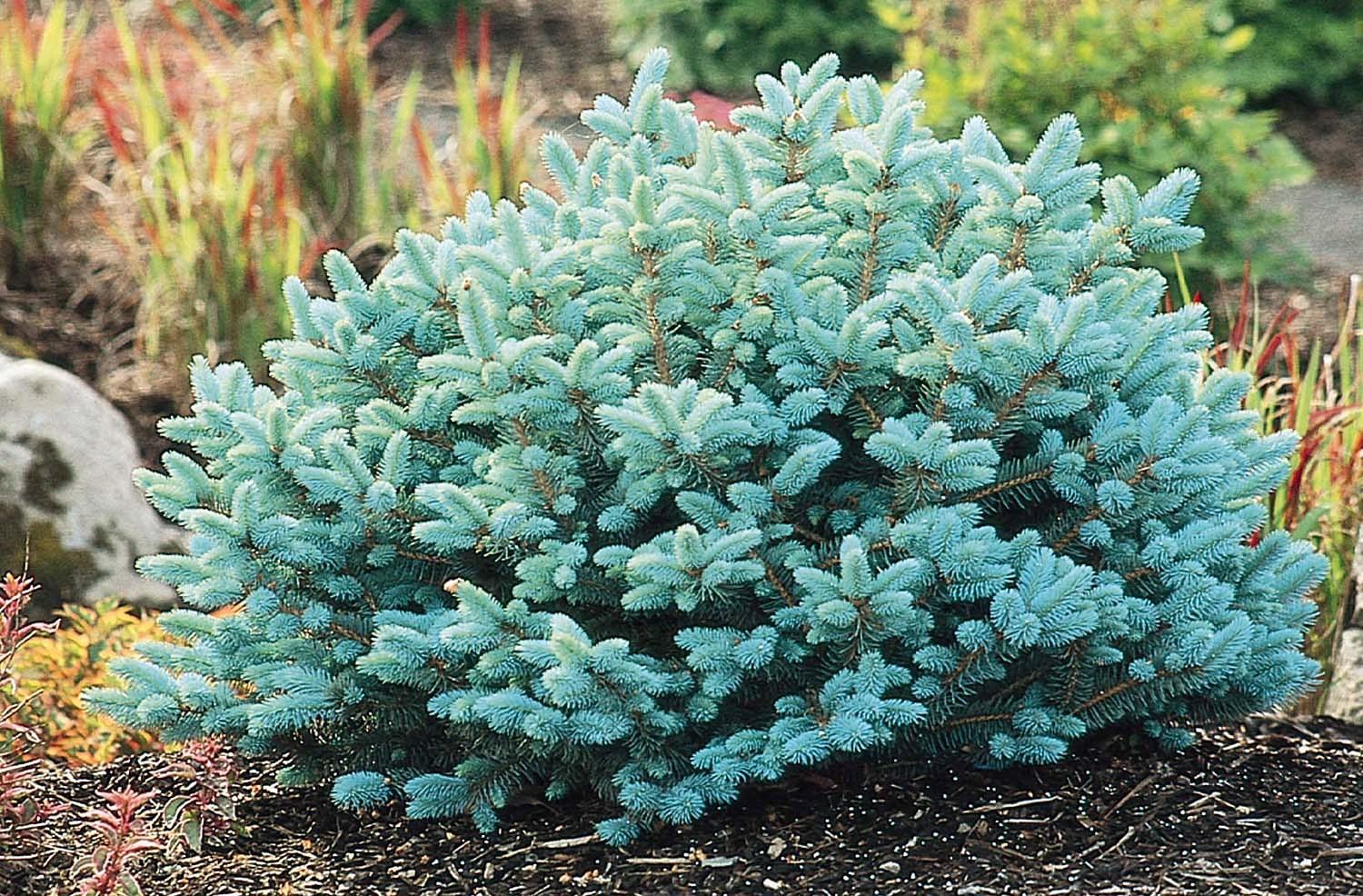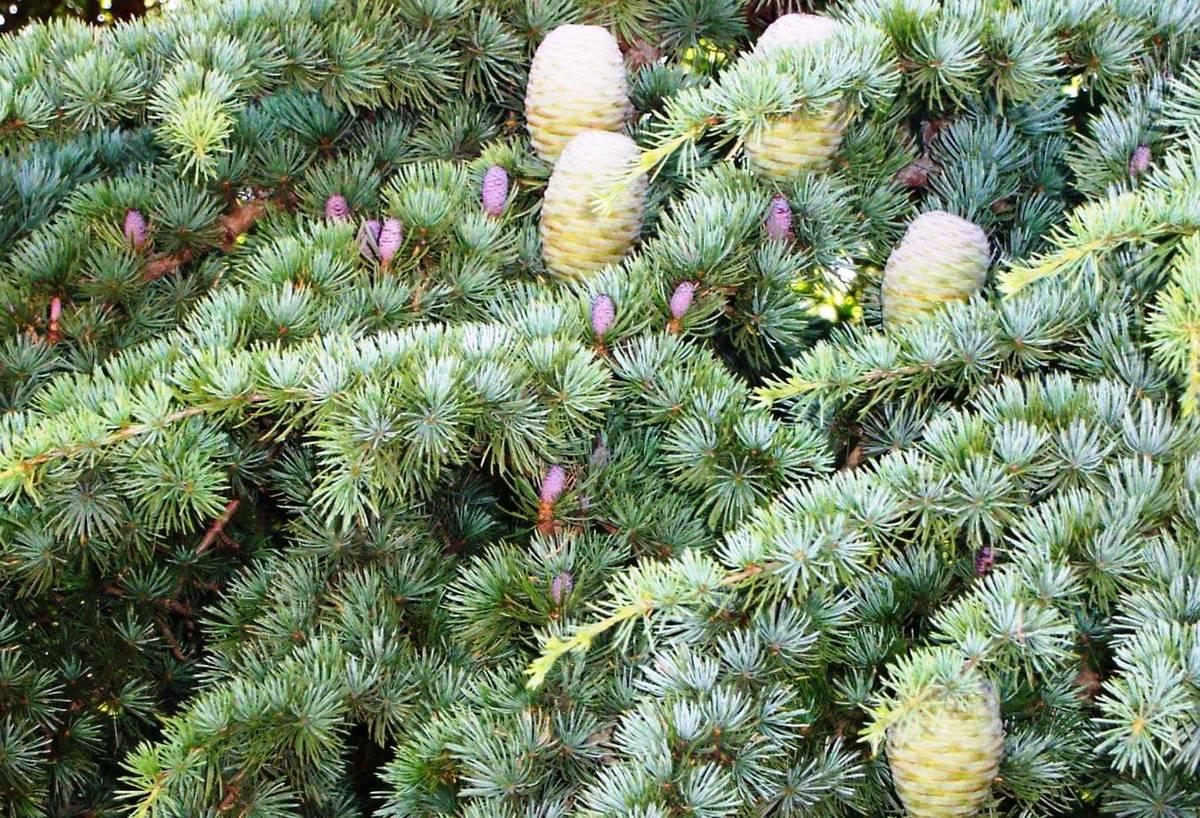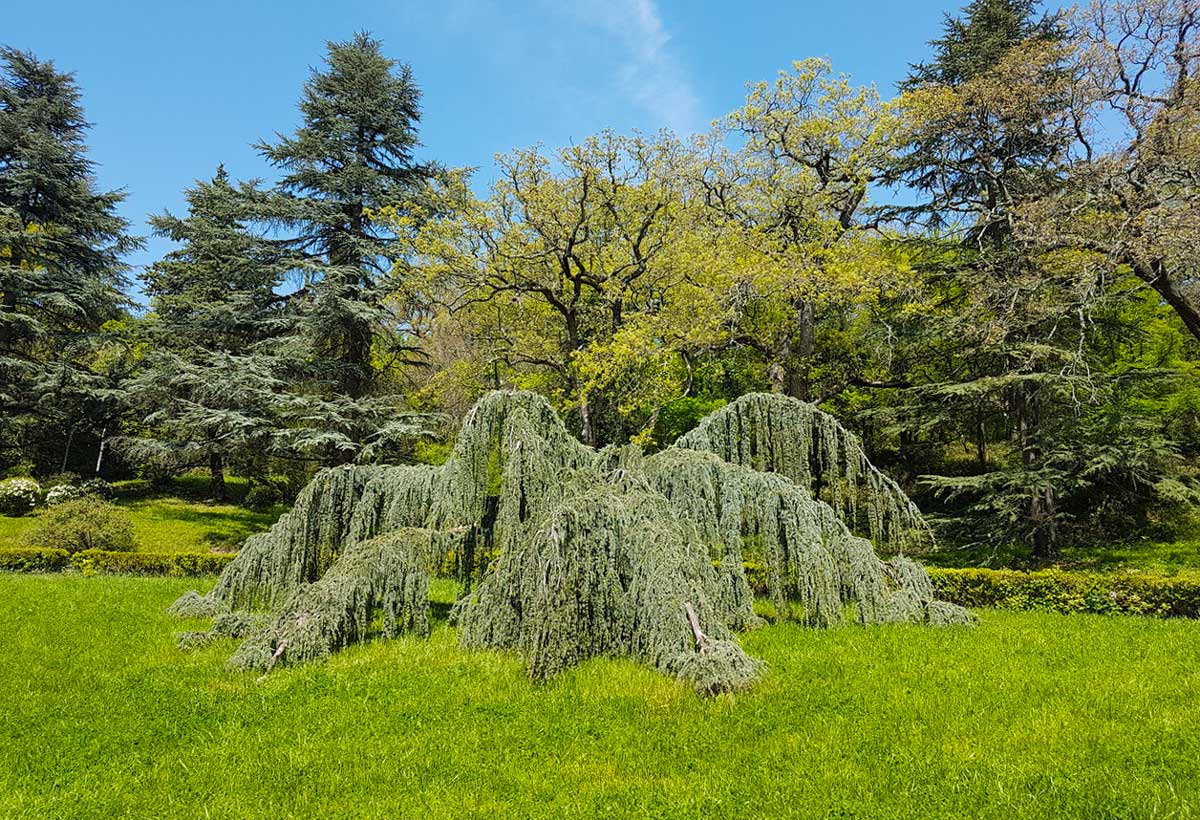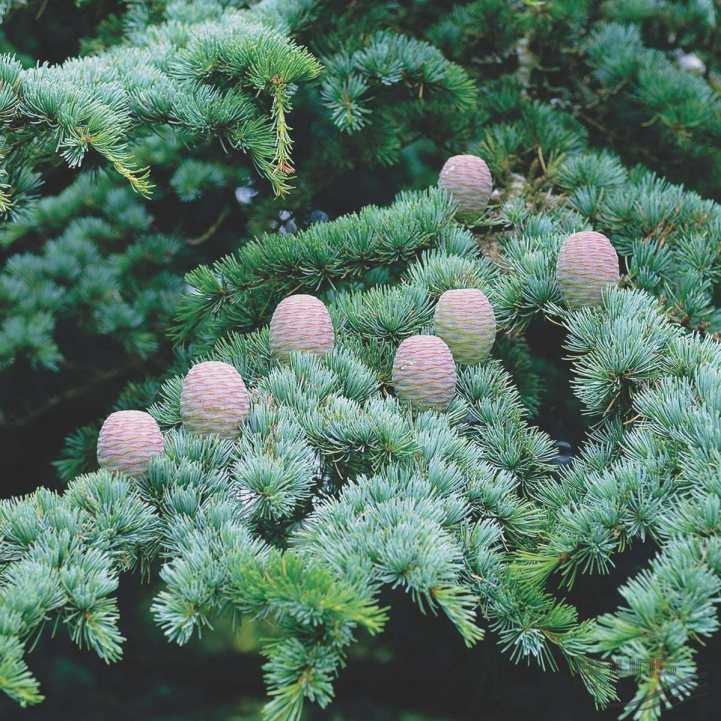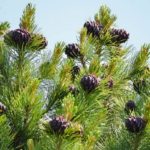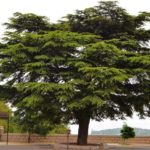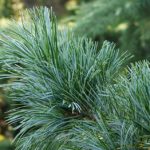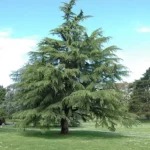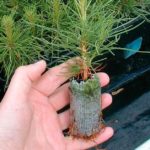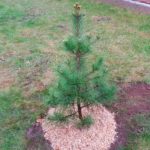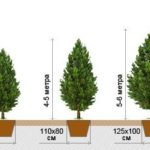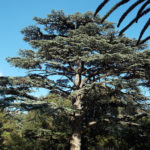Atlas cedar is a common coniferous plant with a bluish-green or blue color that has a pyramidal crown. The color of a crop directly depends on its variety. The excellent decorative qualities of the plant allow it to be used in landscape design. The tree is often used to decorate garden plots. In order for a culture to maintain its decorative properties, it needs to be provided with proper care.
What kind is this
This plant belongs to the Pine family.Under natural conditions, it is found on the mountain slopes of the northern regions of Morocco and Algeria. This culture is able to grow even in the most unfavorable conditions. Atlas cedars are found even at an altitude of 1300-2000 meters above sea level.
The tree can live up to 800 years. Moreover, its maximum height is 50 meters. Young trees develop very quickly. Mature pine trees have a brown trunk. The plants are distinguished by a spreading cone-shaped crown, which becomes flatter with age. There are also weeping varieties of the crop.
The tree bark is covered with cracks. At the same time, the wood has a pronounced aroma of pine needles and sandalwood. Atlas cedar is characterized by 2.5 centimeter needles that form in bunches. The needles are distinguished by a silver-green or bluish color.
The cones are characterized by an ovoid or cylindrical shape and reach a length of 10 centimeters. They are characterized by a smooth and dense surface. The ripening of cones is observed in September-October. It takes 3 years for the fruits to ripen.
Varieties
Atlas cedar is often called Atlantic cedar. The plant has several forms that are similar in appearance and characteristics. They are actively used in landscape design as tapeworms and for creating coniferous compositions. This plant is also ideal for forming hedges.
The shape of Atlas cedars can be different - weeping, columnar, pyramidal. The needles can have different colors - silver, golden, blue.All forms of culture are distinguished by excellent decorative properties. They can be safely used to decorate summer cottages.
Fastigiata
According to the botanical description, this plant has a columnar crown and short shoots directed upward. The needles differ in color. Their color can vary from light green to bluish. The tree is characterized by compact dimensions and does not exceed 2 meters in height. In 1 year it grows by a maximum of 20-25 centimeters.
The plant is characterized by gray-black bark. Young crops have a smooth trunk, but with age it becomes rough. The cones are large in size and brownish-green in color. This variety is resistant to wind. However, it is better to grow it in well-lit areas.
As for the soil, this cedar grows normally in sandy loam, peat, and clay substrates. However, it should be dry or moderately moist. The culture is characterized by resistance to drought and air pollution. The attractive color and beautiful shape make it possible to actively use this cedar for decorating garden plots.
Glauca Pendula
This culture has a weeping form. The Glauka Pendula cedar began to be cultivated by grafting at the end of the nineteenth century. It is characterized by dense branches that fall down. In addition, the culture has blue needles with a silver tint, making it look even more exotic.
The tree is distinguished by short needles that grow in a spiral or in bunches of 40 pieces. In this case, the needles do not exceed 2.5 millimeters in length. The plant reaches a height of 4 meters and a width of 5. Therefore, there is a lot of free space near it. In 1 year, this type of cedar grows 30-45 centimeters.
The formation of a lush crown occurs only with sufficient lighting. In the third year, barrel-shaped cones appear on the plant. Their length reaches 7 centimeters, and their diameter is 4.
Reproduction of gray weeping cedar is carried out only with the help of spring grafting. A tree grown by seed has a classic vertical shape. The variety is considered undemanding to soil. However, it does not tolerate lime deposits and high humidity.
Glauca
This crop is a beautiful tree, which is distinguished by a spreading pyramidal crown. During its existence, the plant has repeatedly received prestigious awards and prizes for the title of one of the most attractive conifers.
The Glauka variety tree can reach a height of 40 meters. Moreover, in 1 year the crop increases in height by 50 centimeters and in width by 30. The plant differs from the mother variety in its greater branching. After some time, the crown takes on an umbrella shape. The needles are gray or bright blue in color.
The tree is characterized by barrel-shaped cones that reach a length of 10 centimeters. This crop easily adapts to any type of soil, but it does not develop well in very wet areas. The tree needs sufficient light and moderate watering.
Application of wood
Almost all parts of the tree are beneficial. Vegetable oil is made from the seeds of Atlas cedar, and essential oil is made from needles, wood and branches. Both substances include a large number of valuable elements - vitamins, fatty acids, microelements.
Cedar-based products help achieve a number of effects:
- disinfect, cope with inflammatory processes, heal wounds and burns;
- eliminate pain and spasms;
- have a tonic effect, relax, improve the functions of the nervous system and eliminate stress;
- help cope with infections and viruses;
- have a mucolytic effect - this helps to use such drugs for bronchitis;
- cope with sleep disorders;
- improve visual functions;
- strengthen the immune system;
- prevent the development of pathologies of the cardiovascular system, musculoskeletal system, and joints.
Cedar essential oil is often used in medical cosmetology and aromatherapy. This remedy helps improve blood flow and lymph exchange. The composition also has pronounced cleansing and tonic properties. It perfectly restores the structure of the skin. In addition, the composition is often used to strengthen hair. Another useful property of cedar-based preparations is their ability to eliminate acne and irritation.
Landing instructions
For planting in open soil, seedlings 6-7 years old are most suitable. When purchasing, it is best to give preference to plants with closed roots. Today, many varieties of Atlas cedars are known, which are adapted to different climatic conditions. They allow you to obtain trees of the desired shape and height. It is recommended to buy such plants only from trusted manufacturers. In this case, planting work should be carried out in September or early October.
A well-lit area is ideal for planting Atlas cedar. It is recommended to place the crop 5-8 meters from other trees. It needs fertile, loose soil. The plant does not tolerate severe drought or excess moisture. Also, cedar does not tolerate lime in the soil.
Before planting, you need to water the hole and wait until the moisture is absorbed. Then you need to lay out the first layer of soil and install the seedling so that the root collar is flush with the ground. After this, the hole needs to be filled with substrate and gradually compacted. Then the tree needs to be watered abundantly again. It is recommended to cover the top of the tree trunk circle with a mulch layer. To do this, it is permissible to use peat, pine needles, and bark.
Nuances of care
In order for the crop to grow and develop normally, it needs to be watered, mulched and fed in a timely manner. It is recommended to moisten the soil every week. In this case, it is necessary to take into account the condition of the soil. During the dry period, the procedure is carried out 2-3 times a week. At the same time, 10 liters of water should be used per 1 meter of tree height. In the evening, it is useful to sprinkle the crown.
In spring and summer, it is recommended to feed Atlas cedar with potash. A universal remedy will be a complex of minerals for conifers, which contain a minimum of nitrogen. Once a month, the tree needs to apply foliar preparations that contain phosphorus, magnesium and iron.
Mulching and loosening the soil is of no small importance. Cedar has a shallow root system, so it is necessary to loosen the soil shallowly. This procedure can be replaced by mulching. Thanks to this, it will be possible to maintain optimal soil moisture parameters. You should use pine needles, bark or peat as mulch.
Atlas cedar needs sanitary pruning. This procedure must be carried out in the spring. It involves removing dry shoots and cones. Crown formation is carried out at will or when it is very thick. At the same time, the wide pyramidal shape is supported naturally. If you need a radical haircut, it is better to do it in September.
In warm regions, it is not necessary to winterize Atlas cedar. However, this only applies to adult crops. Young seedlings need to be mulched with a layer of peat or leaves. In this case, the crown must be wrapped in burlap and tied with a rope.
Tree propagation methods
Under natural conditions, the crop reproduces by seed. However, in the garden it is better to use vegetative methods. This option is considered more effective and simpler. Cedar is usually propagated by seed by specialists. Before planting, planting material must undergo stratification. Otherwise, it will not be possible to wait for seedlings.
To propagate Atlas cedar, you usually buy ready-made seeds. Their preparation should begin 3 months before planting. First you need to evaluate the quality of the nuts. After which they should be placed in sawdust and treated with fungicides. First, cedar seeds are planted in a greenhouse. After sprouts appear, they can be moved to containers. After a few years, seedlings can be moved to open soil.
Vegetative methods involve propagation by grafting or cuttings. In the first case, the cultural organ is fused with another plant. This method is used quite rarely. It is recommended to plant plants in warm weather. To do this, you need to remove the upper part of the shoot and make a 1.5 centimeter long cut on the branch.You need to place a cutting of another plant in it. After which the graft must be tied and treated with garden varnish.
Cuttings are considered a more accessible procedure. To do this, a seedling can be obtained from a root or shoot. To prepare the cutting, it is recommended to separate it with a sharp movement and clean it from the needles at the bottom. After which the cut area must be placed in a root formation stimulator. “Epin” or “Kornevin” are perfect for this purpose.
Then it is recommended to place the plant in damp sand, positioning it at a slight slope. By the time autumn arrives, the cuttings can be planted in different containers. After another season, they can be moved to open ground.
Possible pests
For Atlas cedar, spruce and spider mites pose a real danger. In the first case, the needles fade, and in the second, a sticky web appears on the tree. The crop may also suffer from an invasion of pine aphids, which absorb the juices of young shoots. In addition, the plant is susceptible to attacks by spruce scale insects, Hermes, and cedar beetle. Such remedies as Vertimek, Metarizin, Actellik help to cope with parasites.
Atlas cedar is an excellent ornamental plant that is often used in landscape design. In order for a culture to develop normally, it needs to be provided with adequate care.

